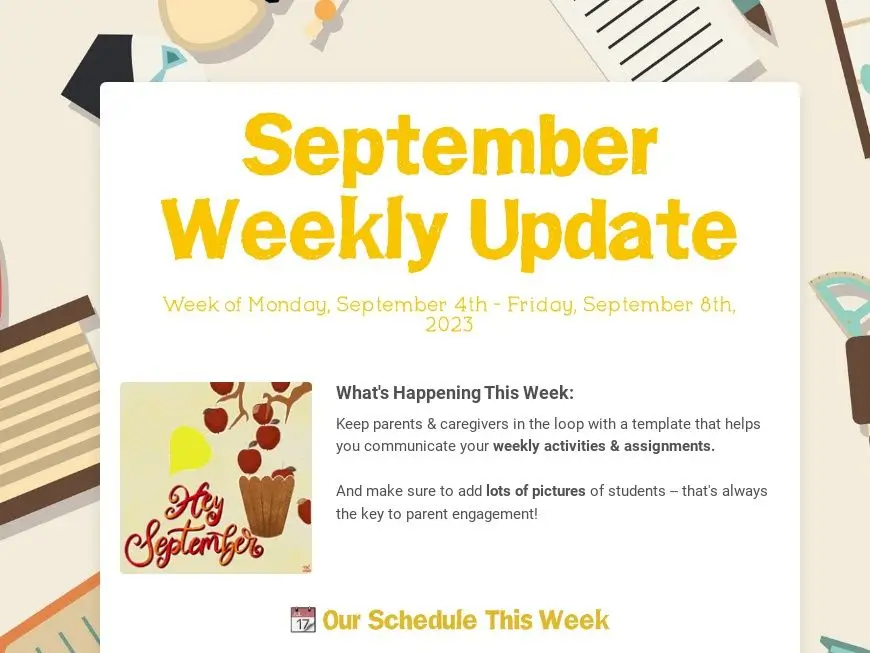Top 10 Best Ways to Involve Families via Classroom Updates

Busy? Here’s the TL;DR
Let’s ramp up classroom newsletters! Research shows that consistent, positive classroom communication has a direct and significant impact on student success. It leads to better attendance, improved behavior, enhanced social-emotional skills, and higher academic achievement—all by building trust at home.
Ready to boost your classroom communication? Here’s your countdown! 🥁
10. Share the Best Way to Contact You
Providing contact information is essential, but go one step further and share your communication preferences. For example, “I typically read and respond to emails between 7:30–8:00 AM and 3:00–4:00 PM. For emergencies, please do X, Y, Z.” This clarity helps set expectations and encourages timely, respectful communication.
8 & 9. Explain Classroom Procedures
Help families understand classroom routines by explaining how students enter and exit the room at the beginning and end of class or the school day. This not only gives parents insight into your methods but also helps them reinforce these expectations at home.
7. Share a Useful Resource
Parenting is tough! Support families by sharing a helpful resource—a blog post, article, or even a meme. Something that will help parents better understand or support their children, or simply let them feel seen. Check out this list of parenting resources for some great ideas.
6. “Look Out For…”
Alert families to upcoming deadlines, projects, class trips, exams, or in-school events. Even if families can’t participate directly, sharing this information encourages virtual participation and keeps them engaged in the school experience.
5. Monthly Check-in
Turn your update into a two-way street by including a simple monthly survey (Google Forms works great!). This encourages family feedback and shows that you value their input. By following up on their responses, you demonstrate your commitment to fostering a supportive school-family partnership.
4. Homework Heads-Up
Preempt the classic “I don’t have any homework” response by clearly explaining your homework routine. Is it daily? Weekly? How should it be turned in? Where can families check for updates? Regular communication can help ensure homework completion and reduce misunderstandings.
3. “Ask Your Child About…”
Ever ask a child what they did in school, only to hear “Nothing”? Help families have more meaningful conversations with their learners by sharing specific prompts like, “Ask your child about today’s science experiment!” or “Ask what book they’re reading in class.”
2. What to Do if Their Child is Struggling
If you’re committed to supporting students’ social, emotional, and academic success, make it easy for families to know what to do if their child is struggling. Spell out the resources available at school and provide clear instructions on how parents can access those supports.
🎉 1. Attendance Props
The #1 predictor of student success? Attendance. Celebrate it regularly in your updates! Highlight students who show up consistently with fun emojis, virtual trophies, or shout-outs. Reinforcing the importance of coming to school not only improves attendance but motivates students to stay engaged. For more attendance tips, visit Attendance Works.
By treating classroom newsletters as a key part of instruction, they can actually reduce the teacher’s burden over time. And remember, if certain students aren’t attending or families aren’t engaging, make the extra effort to reach out. Students need to know that their presence matters and that someone cares.
Want to get everyone communicating consistently? Check out these templates from Smore, and start building a culture of effective communication!
Duplicate this template to get started!
Want to get everyone communicating consistently?

Subscribe to Smore Blog
Get the latest posts delivered right to your inbox





